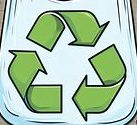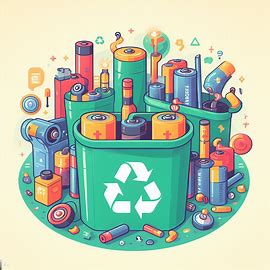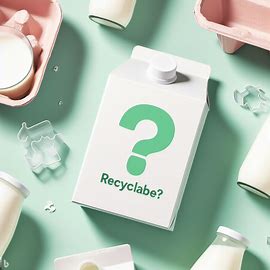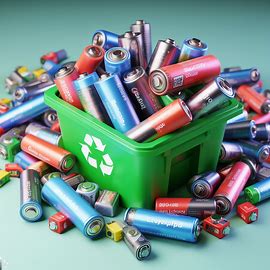Is Cardboard Recyclable? A Complete Guide
Cardboard, with its versatility and widespread use in packaging, is a common material encountered in our daily lives. As sustainability gains prominence, understanding the recyclability of cardboard becomes paramount. In this comprehensive guide, we unravel the eco-friendly potential of cardboard, exploring its recyclability, the recycling process, and how individuals can contribute to a greener future.
The Green Credentials of Cardboard:
Cardboard, a type of paperboard, is crafted from recycled paper fibers, making it inherently eco-friendly. Known for its strength and durability, cardboard is a staple in the packaging industry. The recyclability of cardboard adds an additional layer of environmental appeal to this widely used material.
Is Cardboard Recyclable?
Yes, cardboard is highly recyclable. The recycling process involves collecting, breaking down, and repulping the cardboard to create new paper products. The cardboard recycling journey showcases a closed-loop system that aligns with the principles of a circular economy.
Types of Recyclable Cardboard:
- Corrugated Cardboard: Used in shipping boxes and packaging materials, corrugated cardboard is easily recyclable.
- Paperboard: Found in items like cereal boxes, paperboard is another form of cardboard that can be recycled.
Benefits of Cardboard Recycling: Unveiling the Green Advantages
Cardboard recycling is not just a process; it’s a crucial aspect of sustainable waste management that offers a range of environmental benefits. Understanding these advantages sheds light on the positive impact of incorporating cardboard recycling into our daily lives and business practices. Here’s a closer look at the key benefits:
-
Forest Conservation:
- Explanation: Cardboard is primarily made from recycled paper fibers. By recycling cardboard, the demand for virgin wood pulp, a primary raw material for paper production, is reduced.
- Impact: Forests play a vital role in carbon sequestration, biodiversity, and maintaining ecological balance. By conserving forests through cardboard recycling, we contribute to the preservation of these critical ecosystems.
-
Energy Efficiency:
- Explanation: Producing cardboard from recycled materials requires less energy compared to creating it from raw materials. The recycling process involves breaking down and repulping cardboard, a more energy-efficient method than extracting and processing virgin resources.
- Impact: Energy efficiency in cardboard recycling contributes to overall energy savings, reducing the environmental footprint associated with cardboard production. This aligns with global efforts to transition towards more sustainable and resource-efficient practices.
-
Waste Reduction:
- Explanation: Recycling cardboard diverts it from landfills, where it would contribute to the growing volume of waste. Landfills emit greenhouse gases and pose risks to soil and water quality.
- Impact: By reducing the volume of cardboard waste in landfills, recycling plays a pivotal role in minimizing the environmental impact of waste disposal. This is a key principle in the transition towards a circular economy, where materials are reused and recycled instead of being treated as disposable.
-
Closed-Loop System:
- Explanation: Cardboard recycling operates as a closed-loop system. Recycled cardboard is used to produce new cardboard products, creating a circular economy where materials are continually reused.
- Impact: The closed-loop system minimizes the need for virgin resources, promoting a more sustainable and circular approach to material use. It reduces the environmental strain associated with extracting and processing raw materials.
-
Greenhouse Gas Reduction:
- Explanation: The cardboard recycling process results in fewer greenhouse gas emissions compared to the production of cardboard from raw materials. This is due to the lower energy requirements and reduced reliance on resource-intensive extraction processes.
- Impact: Greenhouse gas reduction is a significant environmental benefit, contributing to climate change mitigation. It aligns with global efforts to lower carbon footprints and achieve more sustainable production and consumption patterns.
-
Resource Conservation:
- Explanation: By recycling cardboard, we conserve valuable resources such as water and wood. The process requires less water compared to the production of cardboard from virgin materials, contributing to overall resource conservation.
- Impact: Resource conservation supports the responsible use of finite resources, promoting a more balanced and sustainable approach to material sourcing and consumption.
Incorporating cardboard recycling into our daily practices not only supports environmental sustainability but also contributes to a more responsible and circular approach to material use. As awareness grows and technology advances, the benefits of cardboard recycling continue to amplify, emphasizing its integral role in creating a greener and healthier planet.
Challenges in Cardboard Recycling: Navigating the Obstacles Towards Sustainability
While cardboard recycling is an essential component of sustainable waste management, it faces several challenges that can impact its efficiency and effectiveness. Understanding these challenges is crucial for developing strategies to enhance cardboard recycling processes. Here are some key hurdles in cardboard recycling:
-
Contamination:
- Challenge: Contamination occurs when cardboard is mixed with non-recyclable materials, such as plastic, food residues, or metals. Contaminated cardboard is challenging to process and may result in lower-quality recycled products.
- Impact: Contamination hampers the efficiency of the recycling process, leading to increased sorting costs and potentially diverting contaminated cardboard to landfills.
-
Wax or Plastic Coatings:
- Challenge: Some cardboard products, particularly food packaging, may have wax or plastic coatings to enhance moisture resistance. These coatings can complicate the recycling process.
- Impact: Cardboard with wax or plastic coatings may not be accepted in all recycling streams, and their presence can lead to difficulties in repulping and separating the cardboard fibers.
-
Mixed Materials:
- Challenge: Cardboard items with mixed materials, such as those with laminated surfaces or adhesives, can be challenging to recycle. The presence of these materials can disrupt the recycling process.
- Impact: Mixed materials increase the complexity of cardboard recycling, leading to additional sorting requirements and potentially reducing the overall quality of the recycled cardboard.
-
Logistical Issues:
- Challenge: The logistics of collecting and transporting cardboard for recycling can be complex, especially in areas with limited recycling infrastructure. Inefficiencies in collection and transportation can increase costs and environmental impacts.
- Impact: Logistical challenges may result in increased greenhouse gas emissions and hinder the scalability of cardboard recycling programs in certain regions.
-
Consumer Behavior:
- Challenge: Inconsistent or incorrect recycling practices among consumers, such as failing to remove contaminants or separating cardboard from other materials, contribute to challenges in the recycling process.
- Impact: Poor recycling habits can increase contamination rates, reduce the efficiency of cardboard recycling, and lead to the disposal of recyclable cardboard in landfills.
-
Economic Viability:
- Challenge: The economic viability of cardboard recycling is influenced by factors such as the market demand for recycled cardboard, fluctuating prices of virgin materials, and the cost of recycling technology and infrastructure.
- Impact: If economic conditions are unfavorable, recycling facilities may face financial challenges, potentially affecting the sustainability of cardboard recycling programs.
-
Educational Awareness:
- Challenge: Lack of awareness and education regarding proper cardboard recycling practices can contribute to increased contamination and ineffective recycling.
- Impact: Investing in public education and awareness campaigns is essential to improve recycling habits and enhance the overall success of cardboard recycling programs.
Addressing these challenges requires a concerted effort from consumers, businesses, and policymakers to improve recycling practices, invest in advanced technology, and foster a circular economy that prioritizes the efficient use of resources.
Maximizing Cardboard Recycling:
Cardboard recycling is a key element in the journey towards sustainable waste management. To maximize the efficiency and effectiveness of cardboard recycling, it’s essential to adopt best practices at every stage, from collection to processing. Here’s a comprehensive guide on how to maximize cardboard recycling:
1. Flatten and Break Down Boxes:
- Why: Breaking down and flattening cardboard boxes optimizes space during transportation and storage.
- How: Before recycling, flatten cardboard boxes and ensure they are broken down. This not only makes handling more manageable but also maximizes space in recycling bins and collection vehicles.
2. Remove Contaminants:
- Why: Contaminants like food residues or non-cardboard materials can hinder the recycling process.
- How: Before recycling, ensure cardboard is clean and free from contaminants. Remove any non-recyclable elements like tape, plastic, or styrofoam.
3. Separate Cardboard from Mixed Materials:
- Why: Cardboard items with mixed materials, such as those with laminated surfaces, can be challenging to recycle.
- How: Separate cardboard from materials that may hinder recycling, such as adhesives or laminations. This ensures that the cardboard can be processed efficiently.
4. Understand Local Recycling Guidelines:
- Why: Recycling guidelines can vary by location, and understanding local requirements is crucial for effective recycling.
- How: Familiarize yourself with the recycling guidelines provided by your local municipality or waste management authority. These guidelines often specify what types of cardboard are accepted and any specific preparation steps.
5. Educate and Engage:
- Why: Promoting awareness about proper cardboard recycling practices is essential for community-wide participation.
- How: Conduct educational campaigns to inform individuals about the importance of cardboard recycling, correct separation practices, and the impact of contaminants. Engage with local communities, schools, and businesses to encourage responsible recycling habits.
6. Implement Efficient Collection Systems:
- Why: Efficient collection systems streamline the process of gathering recyclable cardboard.
- How: Implement organized and accessible collection systems. Designate separate bins for cardboard, clearly indicating where individuals should dispose of their recyclable cardboard items.
7. Explore Innovative Recycling Technologies:
- Why: Innovations in recycling technologies can enhance the efficiency of cardboard recycling.
- How: Stay informed about emerging recycling technologies that improve the quality and quantity of recycled cardboard. Investing in advanced sorting and processing technologies can contribute to more effective recycling outcomes.
8. Collaborate with Businesses:
- Why: Collaborating with businesses encourages responsible cardboard recycling practices.
- How: Establish partnerships with local businesses to encourage proper disposal of cardboard packaging. Provide information on recycling practices and explore opportunities for businesses to participate in community recycling initiatives.
9. Advocate for Sustainable Packaging:
- Why: Encouraging sustainable packaging practices reduces the environmental impact of cardboard.
- How: Advocate for and support businesses that use environmentally friendly packaging materials. Encourage the adoption of packaging that is easily recyclable and has minimal environmental impact.
10. Complement Recycling with Composting:
- Why: Composting can be an alternative for cardboard items with food residues.
- How: If cardboard is soiled with food residues and cannot be recycled, consider composting it. Composting provides a sustainable disposal option for certain cardboard items.
By incorporating these practices into cardboard recycling efforts, individuals, communities, and businesses can contribute significantly to the success of recycling programs. Maximizing cardboard recycling not only conserves resources but also promotes a circular economy, where materials are reused and repurposed for a more sustainable future.
Conclusion:
In conclusion, cardboard stands as a shining example of recyclability and sustainability. By understanding the recyclability of cardboard, embracing proper recycling practices, and being mindful of potential challenges, individuals can actively contribute to a greener and more environmentally conscious world.
As we unbox the truth about cardboard recyclability, we unveil the potential for positive environmental impact. Recycling cardboard is not just a choice; it’s a conscious commitment to reducing our ecological footprint and fostering a circular economy. As technology advances and awareness grows, the journey towards a more sustainable cardboard industry continues, and each recyclable cardboard item becomes a testament to our shared responsibility for the planet.







